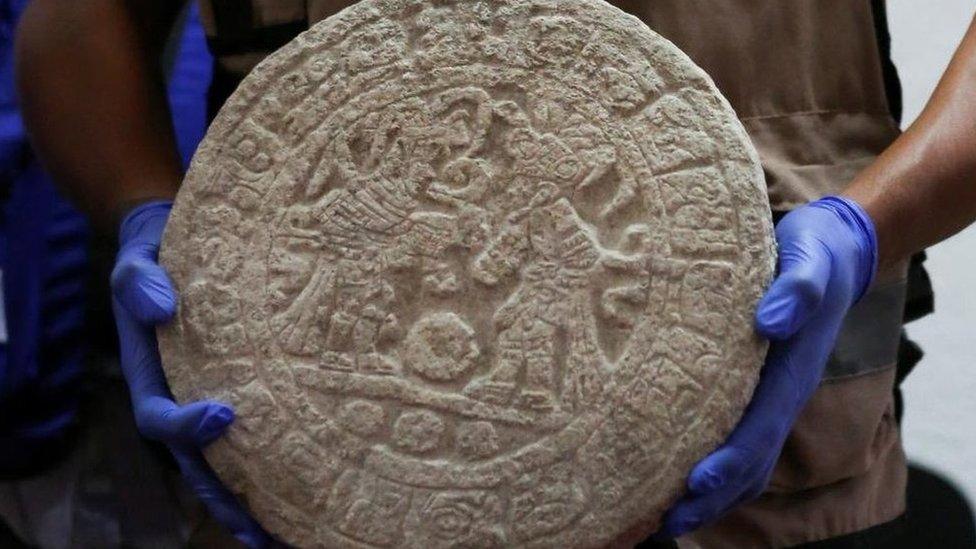Ancient Mayan pelota scoreboard discovered
- Published
- comments

The stone is around 32.5cm across
Archaeologists in Mexico have uncovered an amazing sporty discovery!
A huge carved stone thought to be an ancient scoreboard for a ball game called Pelota was found by experts at the ruins of an ancient Mayan city Chich茅n Itz谩 in Mexico.
Scientists think the scoreboard which is covered in carvings of pelota players and hieroglyphic writing, could be at least 1,200 years old.
"It is rare to find hieroglyphic writing at this Maya site, and even rarer to find a complete text. This hasn't happened in 11 years," archaeologist Francisco P茅rez Ruiz explained.
Archaeologists say the stone will give them clues about the life of the Mayan people
The 40kg-stone was found buried underground by archaeologist Lizbeth Beatriz Mendicut P茅rez in an area known as Casa Colorada (meaning Red House).
It features carvings of two pelota players wearing some pretty fancy headgear.
One can be seen wearing a feather headdress and the other - thought to be his opponent - is wearing a "snake turban".
Historians say that Mayans were a civilisation of people who existed from around 250 AD to around 900 AD.
They lived in a place called Mesoamerica, an area of land made up of Mexico and part of Central America.
They are known for the amazing buildings they built, their art, folklore, legends and writing.
From around 1517 - 1697 Spanish invaders (conquistadores) started to destroy Maya cities and people.
The figure with the snakes slithering around his head also appears to be wearing the protective gear that pelota players would usually wear when they compete.
Pelota is an ancient game where players compete as a team to hit a heavy ball made from rubber using their hips.
It is played on a special court, and is thought to be around 3,000 years old.
- Published2 June 2022
- Published2 November 2021
